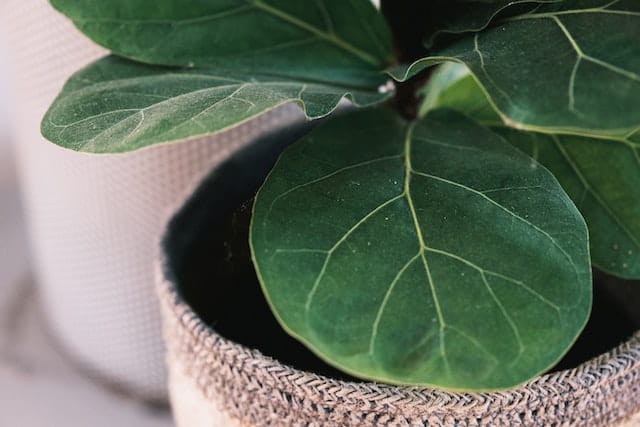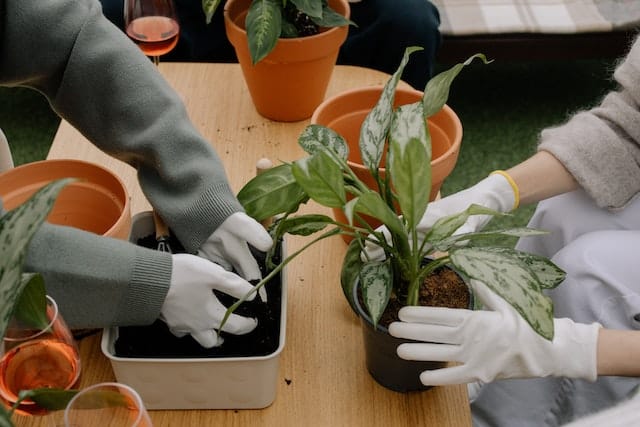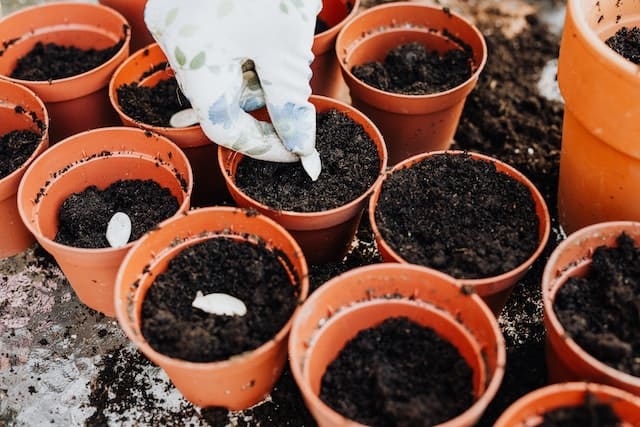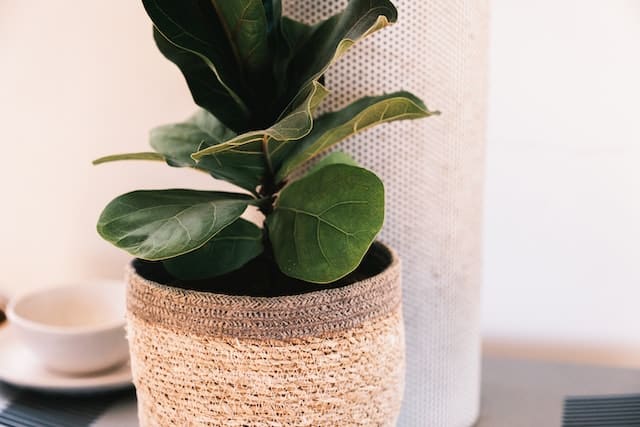Fiddle leaf figs with their beautiful leaves make for amazing houseplants, but they can be quite hard to care for. With the correct care and maintenance, fiddle leaf figs can be a stunning addition to any home, bringing a lush and calming atmosphere with their distinctive foliage. You should be careful leaving this plant in one pot for too long, housing it in too big a pot, or attempting to repot it in colder months. This could lead to root rot, dangling leaves, and a weak plant.
If you have this plant in your home, keep reading to learn the must-know tips for caring for it and what could happen if your fiddle leaf fig is root bound.
Do Fiddle Leaf Figs Like to Be Root Bound?

Root bound means a plant’s roots have grown too big for its pot. When a plant is root bound, its roots displace the soil and can block the pot’s water drainage holes, leading to root rot. A root bound plant doesn’t have enough room to grow and can slowly wither away.
While some plants can manage being root bound, fiddle leaf figs do not like it. Once they grow too big for their pot, they should be repotted immediately.
In general, you should repot a fiddle leaf fig every two to three years, with each consecutive pot getting a bit bigger, but not too big. If a pot is too big, it can retain water and lead to root rot. The best is to go one standard pot size up each time you repot.
It’s also best to repot when the plant is active, which is during warmer months such as spring or summer. Fiddle leaf figs do not do well in cold weather and crave consistency. If you repot in cold winter months with the addition of cold water, your plant could go into shock and become stressed.
Identifying a Root Bound Fiddle Leaf Fig
The easiest way to determine if your plant is root bound is if the roots begin to grow from the bottom through the drainage holes, especially if the bottom of the roots begin to spiral.
Other signs your plant has a problem are if the first dries out faster than anticipated, it falls on its side, the leaves develop brown tips, the pot begins to crack or expand, the plant experiences stunted or slow growth, or if you see droopy leaves on your fiddle leaf fig.
If your fiddle leaf fig is experiencing any of these signs of being root bound, it’s time to move it to a bigger pot. Keep reading below to find out how.
The Harm of Root Bound Plants
When a plant is root bound, its roots become tightly bound together in a tangled mess with nowhere to grow. If the roots begin to grow through the water drainage holes at the bottom, the root can clog the pot leading to drowning the plant and root decay.
Because root bound plants are not getting the proper amount of water and nutrients, it can lead to yellow foliage, wilting, and rotting. A tangle of roots can also be a breeding ground for pests. Another issue is pot damage. If a root bound plant is severe, it can bend, crack, or break the pot.
How to Fix a Root Bound Fiddle Leaf Fig

Fiddle leaf figs are very delicate and do not like to be repotted, so remember to begin slowly and be gentle.
First, tip the pot to its side and gently remove the plant. It’s best not to pull the plant upward right out of its container or it could cause damage.
If your fiddle leaf fig is root bound it will most likely have a hard, compact root ball. Massage the root ball with your fingers to loosen it, dislodging the old dirt. You can also run it under tepid or warm water to loosen the roots and remove all the old soil.
Avoid ice-cold water. Also, remove any destructed or injured roots or cut any that are too long. This will lead to new growth.
How to Repot a Root Bound Fiddle Leaf Fig

Once your root bound fiddle leaf fig has been removed from its previous pot, cleaned of all old soil, and its roots are clean and loose, you are safe to repot. Fiddle leaf figs are known to be ‘fussy’ plants that like what they like so consider this when choosing your soil mix.
There are potting mixes on the market made specifically for fiddle leaf figs, but others recommend mixing a half-and-half blend of cactus mix and indoor potting mix. Another soil alternative is mixing two parts potting soil, one part peat moss, one part perlite, and a bit of water.
Now, you need to choose the new pot. Select a pot that is two to three inches larger and ensure it has drainage holes and has been properly cleaned to avoid passing fungus or old pathogens to your fiddle leaf fig.
Fill the pot up a third of the way with the new soil, place your plant in the pot, and then cover its sides with the new soil. Pat the soil around the roots for extra support and don’t forget to water.
See a similar post: Do Pothos Like to be Root Bound?
Final Thoughts
So, do fiddle leaf figs like to be root bound? The answer is no. Fiddle leaf figs need space to grow and should be repotted every two to three years. It’s best to repot before the plant is root bound, but if you begin to see roots growing through the pot’s water drain holes, know it’s time to move to a new pot immediately.
Fiddle leaf figs are delicate plants so always be gentle when moving the plant, massaging the roots, repotting, and remember to never use cold water or repot during colder months. With a bit of love and attention, fiddle leaf figs make the most beautiful house plants.
Frequently Asked Questions
How Do I Know If My Fiddle Leaf Fig Needs to Be Repotted?
A telltale sign that your fiddle leaf fig needs to be repotted is if its roots begin to grow through the pot’s water drainage holes or from the top of the soil. Other common signs are dry soil, the plant keeps falling over, leaves with brown or yellow tips, a cracking pot, stunted growth, or droopy leaves.
These signs mean the plant isn’t getting enough water or nutrients or is getting overwatered by blocked water drains and should be repotted immediately. If you don’t see any signs, you should still consider moving your fiddle leaf fig to a larger pot after two to three years. It’s best to repot before your plant gets root bound.
How Do I Know If My Fiddle Leaf Fig Is Root Bound?
If your fiddle leaf fig becomes root bound it will grow a hard, compact ball of roots that will block proper water and nutrients. Signs this is occurring are if roots are growing out of the container, dry soil, a cracked pot, wilted leaves, and stunted growth.
Why Do Fiddle Leaf Figs Not Like to Be Moved?
Fiddle leaf figs love consistency and staying in a warm home, yet need to be moved to a bigger pot to grow. Moving them can stress and shock the plant and cause it to lose leaves as it adjusts to its new environment.

Hey, I’m Lisa and I’ve been an avid gardener for over 30 years. I love writing, talking and living in the garden! Feel free to connect with me on my socials below

